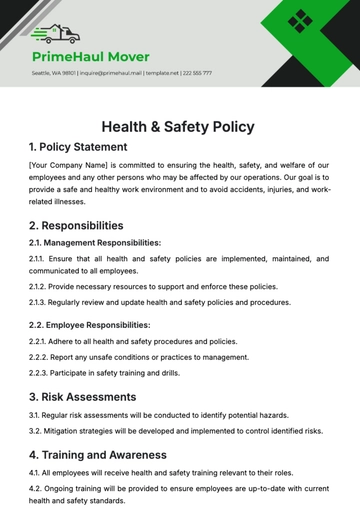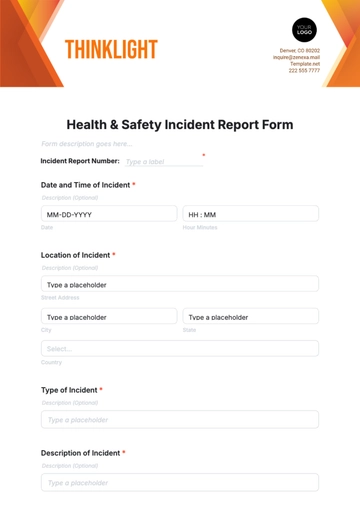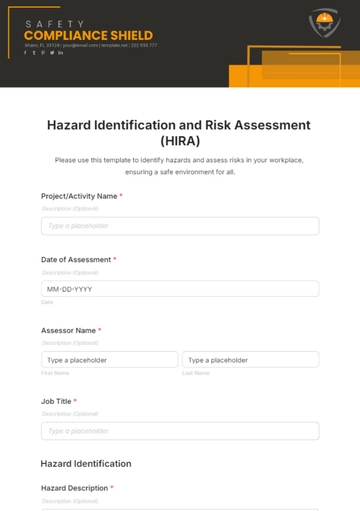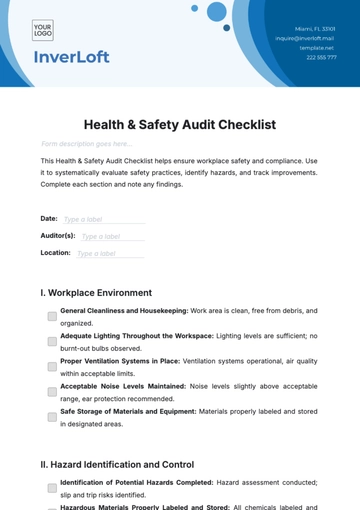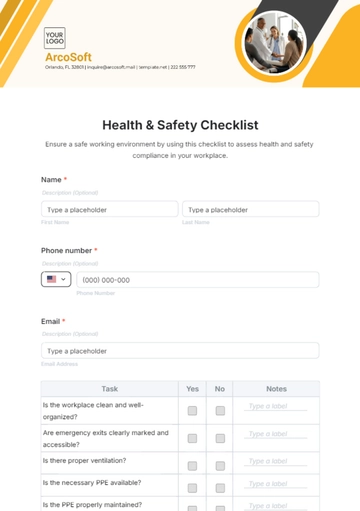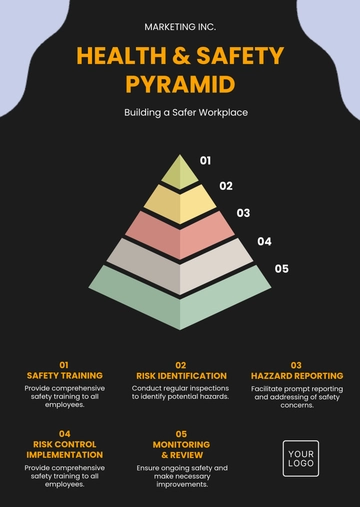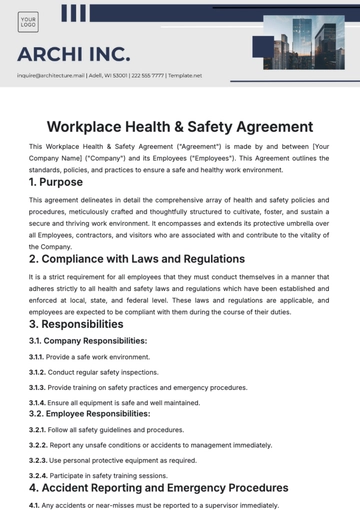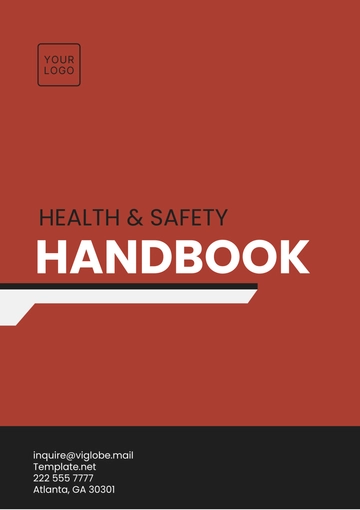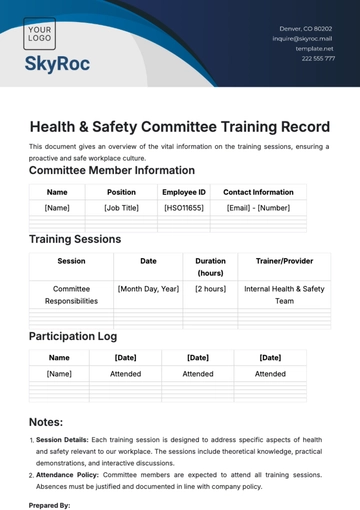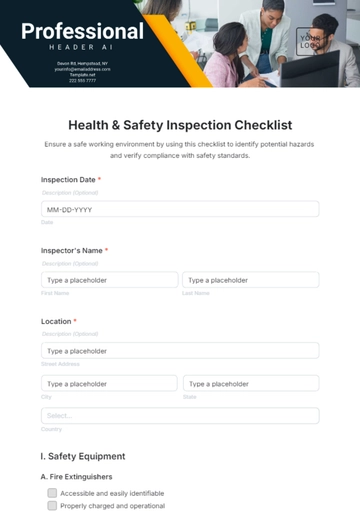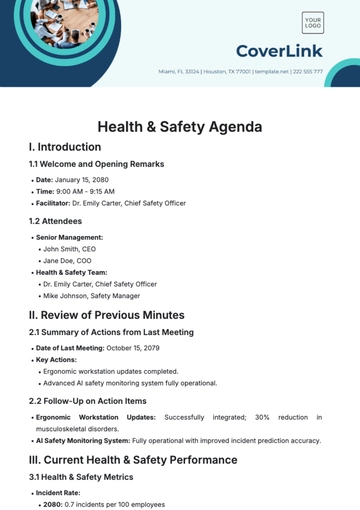Free Health & Safety Training Methodology Study
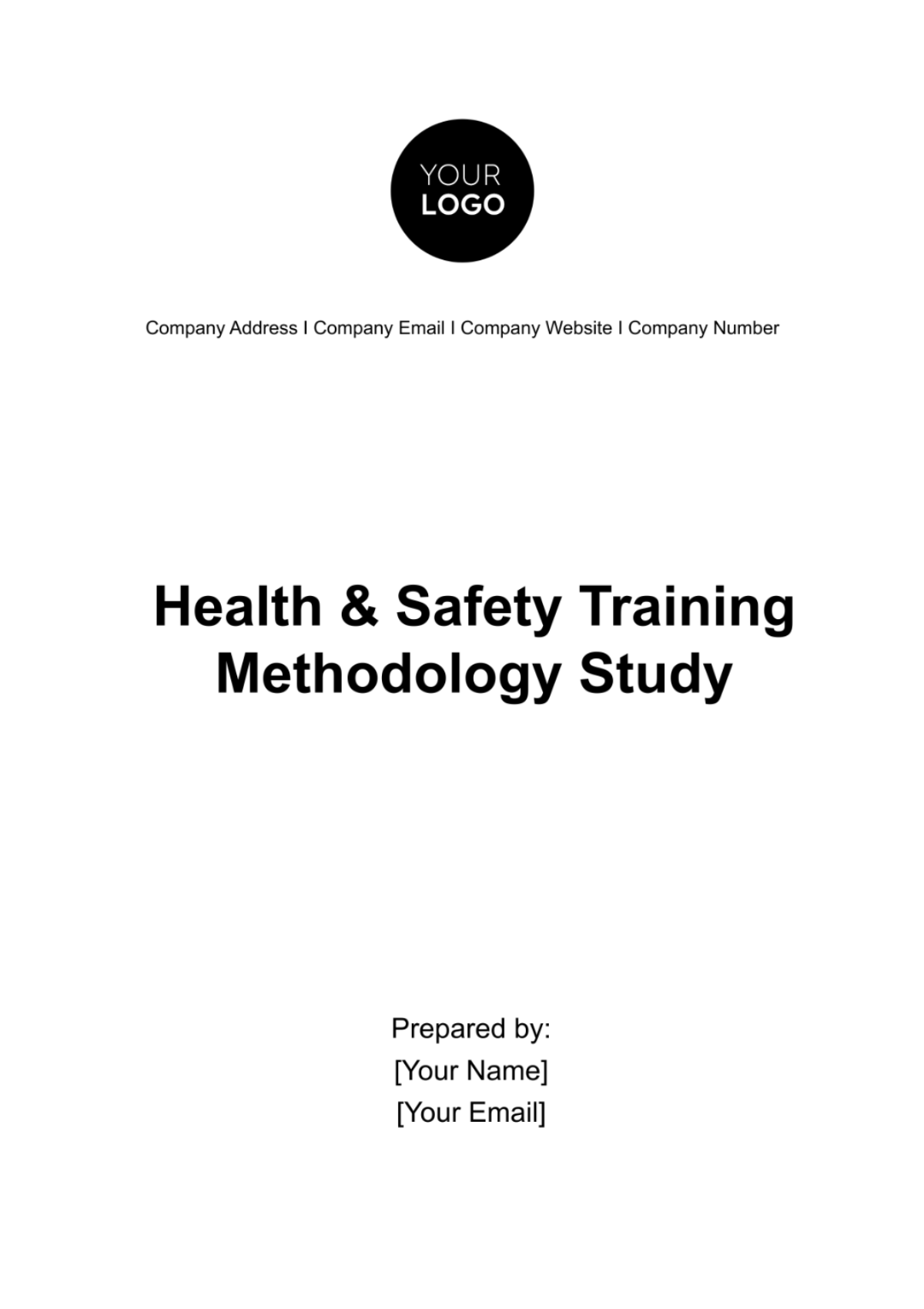
I. Study Overview
The primary purpose of this study is to evaluate the effectiveness of the current Health & Safety training methodologies implemented at [Your Company Name]. The objectives include assessing how well these methodologies facilitate learning, retention, and application of health and safety principles among employees. This study aims to identify areas for enhancement to optimize the training impact.
Scope of Study:
The scope encompasses a comprehensive review of all training sessions conducted over the last quarter, focusing on varied formats including in-person workshops, e-learning modules, and blended learning approaches. It will cover different departments and roles to ensure a holistic understanding of the training's effectiveness across the organization.
Impact Assessment:
A critical aspect of the study is to assess the impact of the training on actual workplace safety practices. This involves not just theoretical knowledge acquisition but also practical skill application and behavioral changes in real-world scenarios.
II. Training Methodology Description
The training methodology under scrutiny employs a multi-faceted approach. It combines traditional classroom learning with interactive workshops and digital simulations. The design of each module is based on adult learning principles, emphasizing experiential and participative learning methods.
The content delivery mechanism varies across different modules. Classroom sessions utilize a mix of lectures and discussions, workshops focus on group activities, and digital simulations provide immersive learning experiences. The integration of multimedia elements and case studies is intended to enhance engagement and understanding.
The effectiveness of this methodology is evaluated in terms of participant engagement, content retention, and ability to apply the learned concepts. The study looks at how different methods cater to varied learning styles and preferences, thereby impacting overall training effectiveness.
III. Participant Demographics
Participants include employees at different hierarchical levels, from frontline workers to management staff, across various departments such as Operations, Human Resources, and Finance. This diversity ensures a broad perspective on the training's effectiveness.
Sample Size and Selection
A total of [150] participants were randomly selected to participate in the study, ensuring a representative sample. The selection process was stratified to include a proportional mix of participants from different departments and job roles.
Participant Group | Department | Number of Participants | Experience Level |
Group A | Operations | 30 | New Hires (<1 year) |
Group B | |||
Group C | |||
Group D | |||
Group E | |||
Group F | |||
Group G |
This table categorizes the participants into groups based on their department and experience level, providing a structured overview of the demographic makeup for the study.
Demographic Analysis
The demographic analysis aims to correlate training effectiveness with various factors like age, job role, and prior experience in health and safety training. This analysis is critical in understanding how the training methodology resonates with different employee groups.
Each department is listed along with the number of participants in each experience level.
IV. Data Collection Methods
This section provides detailed information on the data collection tools, data points collected, and the data collection process used for the study.
A. Data Collection Tools
The study employs a mix of quantitative and qualitative data collection tools. Surveys and quizzes provide quantifiable data on knowledge acquisition, while interviews and focus groups offer in-depth qualitative insights into participant experiences and perceptions.
B. Data Points Collected
Key data points include participant satisfaction, knowledge gain (measured through pre- and post-tests), skill application in simulated environments, and feedback on training materials and instructors.
C. Data Collection Process
Data is collected at multiple points – immediately after the training, one month later, and three months post-training. This longitudinal approach helps in assessing not just immediate but also sustained impacts of the training.
Data Collection Tool | Data Points Collected | Data Collection Process |
Surveys | Participant Satisfaction, Knowledge Gain | Distributed immediately after training and one month later |
Quizzes | Knowledge Retention | Administered pre-training, immediately post-training, and three months later |
Interviews | In-depth Participant Feedback, Experience Insights | Conducted one-on-one, one month post-training |
Focus Groups | Feedback on Training Materials, Instructor Effectiveness | Held three months post-training with selected participants |
Observations | Engagement Levels, Practical Skill Application | Performed during training sessions, noted by trainers |
V. Study Findings
A critical component, this section systematically identifies potential hazards and assesses the risks associated with them, providing a clear picture of safety vulnerabilities.
Preliminary Findings and Insights
Preliminary findings suggest high engagement levels in interactive workshops and simulations, but varied responses to e-learning modules. Immediate post-training assessments showed significant knowledge gains, but there was a drop in retention observed in the subsequent assessments.
The analysis reveals that while interactive and practical sessions are effective in the short term, the e-learning components need reinforcement strategies to aid long-term retention. The varied learning preferences and styles also influence the effectiveness of different training methodologies.
Observations in the workplace post-training indicate an increase in safety-conscious behaviors and better compliance with safety protocols. However, the translation of theoretical knowledge into practical application is inconsistent, underscoring the need for more on-the-job training elements.
Key Findings Summary Table
Finding Category | Key Observations | Analysis of Results | Impact on Workplace Practices |
Engagement Levels | High in interactive sessions, varied in e-learning modules | Interactive methods are more effective in maintaining participant attention | Positive correlation with increased safety-conscious behaviors |
Knowledge Gain | Significant improvement in immediate post-training assessments | Need for strategies to sustain knowledge retention over time | Inconsistent application of theoretical knowledge |
Skills Application | Effective skill development in practical exercises | Practical exercises enhance skill retention and application | Observable improvement in safety practices |
Long-Term Retention | Drop in retention observed in follow-up assessments | Indicates a need for ongoing reinforcement and refresher training | Gap identified between knowledge retention and practical application |
Participant Feedback | Mixed responses to e-learning modules, positive feedback on interactive sessions | Suggests enhancing e-learning modules with interactive elements | Feedback indicates a demand for more engaging and relevant training content |
This table provides a concise summary of the key findings from the study, including observations, analysis of the results, and their impact on workplace practices.
VI. Methodology Strengths and Weaknesses
This section delves into the strengths and weaknesses of the Health & Safety training methodologies as identified by the study. It aims to highlight the areas where the training excels and pinpoint specific aspects that require improvement, providing an objective assessment to guide future enhancements in training approaches.
A. Identified Strengths
High engagement and positive response in interactive sessions.
Effective use of real-life scenarios and simulations in enhancing practical skills.
Comprehensive coverage of essential health and safety topics.
B. Identified Weaknesses
E-learning modules show lower engagement and retention rates.
Inconsistency in the application of learned skills in the workplace.
Lack of personalized learning paths for different employee groups.
VII. Recommendations and Conclusions
This section summarizes the insights gathered from the study to suggest actionable strategies for enhancing the Health & Safety training program. It outlines practical steps that can be taken to address the identified weaknesses, while building upon the strengths, to foster a more effective and comprehensive safety training environment.
A. Recommendations for Improvement
Enhance e-learning modules with interactive and gamified elements.
Introduce follow-up sessions and on-the-job training to reinforce learning.
Customize training content to cater to diverse employee groups and learning styles.
B. Concluding Remarks
The study concludes that while the current training methodologies at [Your Company Name] are effective in certain aspects, they require refinements to address the gaps in e-learning engagement and long-term retention. Tailoring training to individual learning preferences and reinforcing learning through continuous engagement and on-the-job training are key to enhancing overall effectiveness.
- 100% Customizable, free editor
- Access 1 Million+ Templates, photo’s & graphics
- Download or share as a template
- Click and replace photos, graphics, text, backgrounds
- Resize, crop, AI write & more
- Access advanced editor
Introducing Template.net's Health & Safety Training Methodology Study Template, a comprehensive tool for evaluating and enhancing safety training strategies. Fully customizable and editable using our Ai Editor Tool, this template empowers businesses to adapt methodologies to specific needs. Simplify the analysis of training effectiveness and refine safety protocols with ease. Elevate your training programs with this exclusive solution from Template.net.

